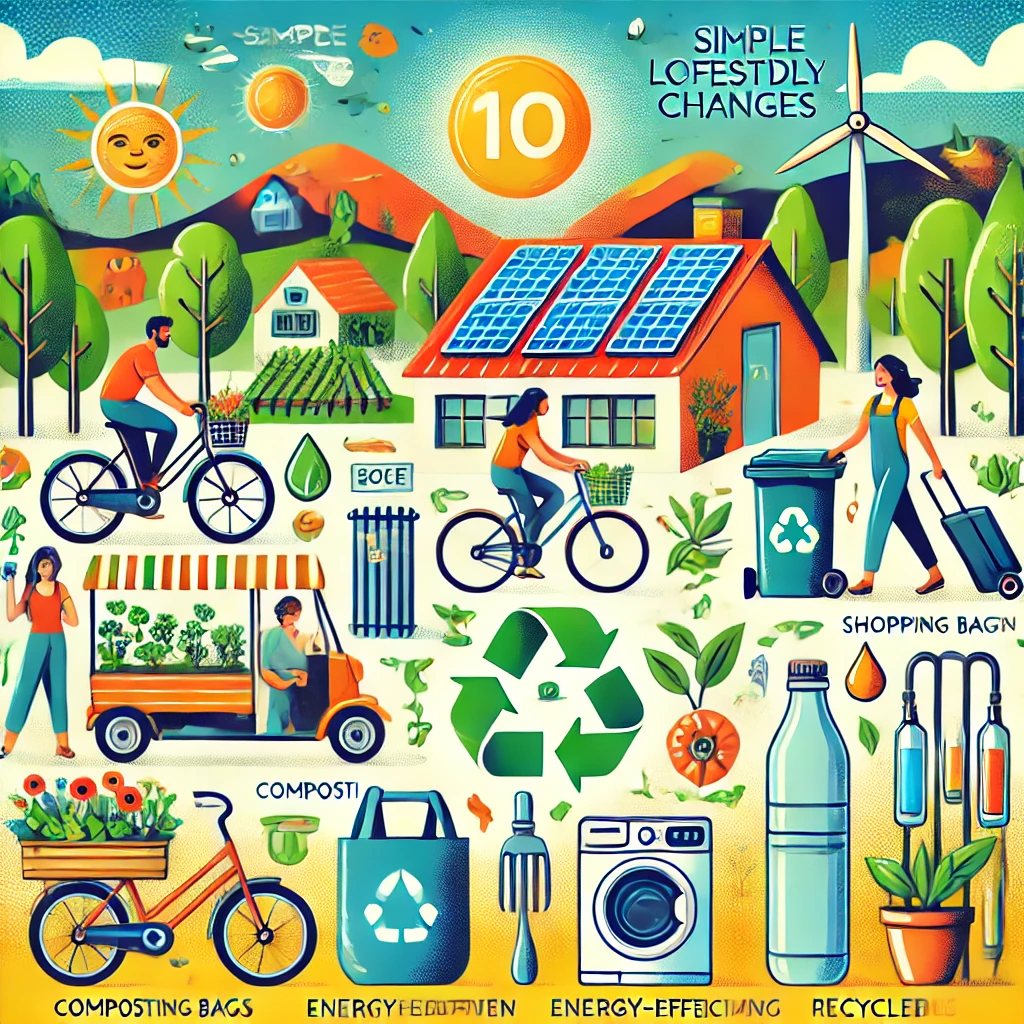10 Easy Changes to Make Your Life More Eco-Friendly
Making your life more eco-friendly doesn't have to be difficult or overwhelming. By implementing a few simple changes, you can significantly reduce your environmental impact and contribute to a healthier planet. This article provides ten easy changes you can make to live a more sustainable lifestyle.
Techno solution

Table of Contents
- Introduction
- Why Go Eco-Friendly?
- Change #1: Reduce Single-Use Plastics
- Change #2: Opt for Energy-Efficient Appliances
- Change #3: Adopt a Plant-Based Diet
- Change #4: Reduce Water Usage
- Change #5: Use Public Transport or Carpool
- Change #6: Practice Recycling and Composting
- Change #7: Choose Eco-Friendly Products
- Change #8: Conserve Energy at Home
- Change #9: Support Sustainable Brands
- Change #10: Educate Yourself and Others
- Conclusion
- References
Introduction
Making your life more eco-friendly doesn't have to be difficult or overwhelming. By implementing a few simple changes, you can significantly reduce your environmental impact and contribute to a healthier planet. This article provides ten easy changes you can make to live a more sustainable lifestyle.
Why Go Eco-Friendly?
Environmental Impact
Adopting eco-friendly practices helps reduce pollution, conserve natural resources, and combat climate change. Small changes can collectively make a big difference in preserving the environment.
Personal Benefits
Going eco-friendly can also lead to personal benefits such as reduced utility bills, a healthier lifestyle, and a sense of accomplishment.
Change #1: Reduce Single-Use Plastics
Alternatives to Plastic
Replace single-use plastics with reusable items. Opt for alternatives like stainless steel bottles, cloth bags, and beeswax wraps.
Useful Tips
Carry a reusable water bottle and coffee cup, avoid plastic straws, and choose products with minimal or recyclable packaging.
Change #2: Opt for Energy-Efficient Appliances
Benefits of Energy-Efficient Appliances
Energy-efficient appliances use less energy, which can reduce your utility bills and decrease your carbon footprint.
Choosing the Right Appliances
Look for appliances with the ENERGY STAR® label, which indicates they meet energy efficiency guidelines set by the U.S. Environmental Protection Agency.
Change #3: Adopt a Plant-Based Diet
Environmental Impact of Meat Consumption
Reducing meat consumption can lower greenhouse gas emissions, conserve water, and decrease deforestation.
Simple Plant-Based Swaps
Incorporate plant-based meals into your diet by swapping out meat for legumes, tofu, or tempeh.
Change #4: Reduce Water Usage
Water-Saving Tips
Take shorter showers, fix leaks, and use water-saving fixtures to reduce water consumption.
Tools and Technologies
Consider installing water-efficient appliances and systems, such as low-flow showerheads and dual-flush toilets.
Change #5: Use Public Transport or Carpool
Benefits of Public Transport
Using public transportation reduces traffic congestion, lowers emissions, and saves money.
Carpooling Tips
Find carpool partners through apps or community groups to reduce the number of vehicles on the road.
Change #6: Practice Recycling and Composting
How to Recycle Properly
Sort recyclables correctly, avoid contaminating recyclables with food waste, and follow local recycling guidelines.
Composting Basics
Start a compost bin for food scraps and yard waste to reduce landfill waste and create nutrient-rich compost for your garden.
Change #7: Choose Eco-Friendly Products
Identifying Eco-Friendly Products
Look for products made from sustainable materials, with minimal packaging, and certified by eco-labels like Fair Trade or Organic.
Popular Eco-Friendly Brands
Consider brands that are known for their commitment to sustainability, such as Patagonia, Seventh Generation, and Ecosia.
Change #8: Conserve Energy at Home
Energy-Saving Tips
Use LED bulbs, unplug devices when not in use, and optimize your home's insulation to reduce energy consumption.
Smart Home Solutions
Install smart thermostats and energy management systems to monitor and control energy usage efficiently.
Change #9: Support Sustainable Brands
What Makes a Brand Sustainable?
Sustainable brands prioritize eco-friendly practices, fair labor standards, and ethical sourcing.
Examples of Sustainable Brands
Explore companies like Allbirds, Toms, and Honest Company for their sustainable practices and products.
Change #10: Educate Yourself and Others
Resources for Learning
Stay informed about environmental issues and sustainable practices through books, documentaries, and online resources.
Ways to Spread Awareness
Share knowledge about eco-friendly practices with friends and family, and participate in community sustainability initiatives.
Conclusion
Implementing these ten easy changes can make a significant difference in reducing your environmental impact. By adopting eco-friendly practices, you contribute to a more sustainable future while enjoying personal benefits.
References
- The Importance of Living Eco-Friendly
- Personal Benefits of Going Green
- Alternatives to Single-Use Plastics
- Tips for Reducing Plastic Waste
- Benefits of Energy-Efficient Appliances
- How to Choose Energy-Efficient Appliances
- Environmental Impact of Meat
- Easy Plant-Based Recipes
- Tips for Saving Water
- Water-Efficient Technologies
- Advantages of Public Transport
- Carpooling Tips and Benefits
- Recycling Guidelines
- Composting 101
- How to Identify Eco-Friendly Products
- Sustainable Brands to Support
- Energy Conservation Tips
- Smart Home Technology for Energy Savings
- Criteria for Sustainable Brands
- Examples of Sustainable Brands
- Educational Resources on Sustainability
- How to Spread Environmental Awareness